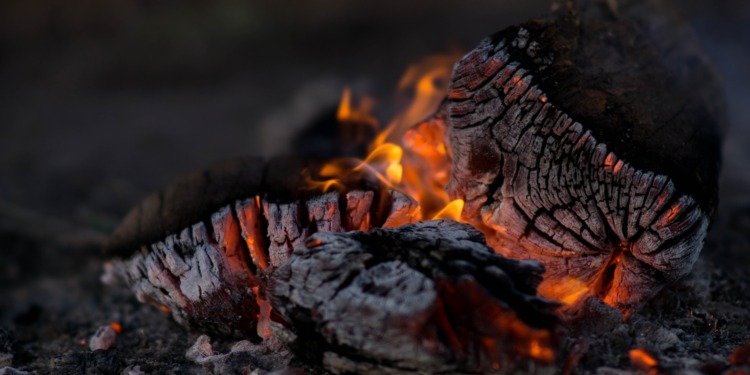European Union leaders “opened the door” for an EU cap on gas prices last week but were unable to reach a consensus on a gas price ceiling due to worries that such a measure may jeopardise regional supply.
Natural gas is Europe’s second largest energy source, accounting for up to 70% of heating in Europe. Although gas prices are still below this year’s peaks, they remain more than 200% higher than in early September 2021.
Aside from supply fears, the energy crisis is exacerbating a rise in living costs, with euro-zone inflation reaching double digits for the first time ever in September.
How severe is Europe’s energy crisis?
In France, the price of wood pellets has nearly doubled to 600 euros per tonne compared to 2021.
According to Frederic Coirier, CEO of Poujoulat SA, which manufactures chimney flues and wood fuels, signs of panic buying have already emerged as some clients purchased two tonnes of wood pellets, despite the fact that less than one tonne is generally adequate to power a home for a year.
To save electricity, the Eiffel Tower, which normally illuminates until 1 am, will be switched off at 11:45 pm.
In Germany, where the country’s chimney sweeps organisations are struggling to cope with the surge of requests to connect new and old burners, residents are inquiring about burning horse manure and other unusual fuels.
With fuel shortages, citizens in Berlin cut down virtually all the trees in the central Tiergarten park for heating, echoing the desolation that followed World War II.
Peter Engelke, a warehouse owner near Berlin’s Tempelhof airport, is installing a new security barrier to prevent desperate individuals from stealing his cargo. The valuable asset at stake – firewood – required an additional security gate to secure the logs, coal briquettes, and heating oil; the crisis also resulted in Engelke having to cease accepting new clients.
“We’re looking ahead to winter with great concern,” said Engelke.
Related articles: Russia’s Energy War on Europe: G7 Agrees on Price Cap for Russian Oil, Gazprom Delays Nord Stream 1 Reopening | Will the EU Run Short of Gas This Winter? | Four Mystery Gas Leaks on Nord Stream Pipelines
In Great Britain, almost one in four people planned to keep the heat off this winter according to a recent survey.
Under Prime Minister Liz Truss’ new “Energy Price Guarantee” scheme, which supersedes the October price cap, an average household in England, Scotland, and Wales will pay up to £2,500 in annual energy costs starting on October 1, until 2024.
This is around £1,000 less than the average household would have spent annually if the price cap from October had been put into effect.
The programme will operate in conjunction with the Energy Bills Support Program, which offers an energy bill reduction of £400 to every home and provides additional assistance to especially needy populations.
Russian gas accounts for less than 4% of the UK’s natural gas needs, putting it in a different position than some of its European neighbours. The high costs brought on by shortages elsewhere have, however, completely disrupted its energy market.
In the year ending in July, domestic gas costs in the UK increased by 96%, and those for electricity by 54%.
Roger Sedin, chief of the air quality unit at the Swedish Environmental Protection Agency, issued a warning about inadequate ventilation and burning damp firewood, saying, “We are worried that people will just burn whatever they can get their hands on.” When individuals burn wood improperly, pollutant levels can reach extremely high levels.
The cost of firewood, which is almost entirely used as winter fuel in the small Hungarian town of Ag, southwest of Budapest, has nearly quadrupled.
Kindling currently costs about half of the $249 monthly average village income, according to the 35-year-old nonprofit organisation employee.
Hungary prohibited pellet exports, and Romania restricted firewood prices for six months. Wood stoves might potentially take months to arrive.
Romania has set a six-month price ceiling on firewood to fight what it deems “artificial hikes.” During the coming winter, one-third of the population will rely on wood for warmth.
Romania is second in the European Union, after France, in terms of the proportion of the population that relies on wood.
In Poland, the consequences involve people burning trash to stay warm. The country has some of the worst air quality in Europe due to its heavy reliance on coal for heating.
Now with the shortage of fuel and the soaring cost of living, people are also burning alternatives like household refuse. The government has temporarily suspended quality controls for coal and considers handing out protective masks.
Surveys show that 60% of Polish households don’t have enough coal supplies to last through the winter, according to Piote Siergiej, spokesman for a network of environmental activists called Polski Alarm Smogowy.
“People are scared and they are collecting anything that can be used for burning,” Siergiej said, adding that this includes lignite, wood, peat, oats — and garbage.
Editor’s Note: The opinions expressed here by the authors are their own, not those of Impakter.com — In the Featured Photo: Stacked firewood. Featured Photo Credit: Wil Stewart.










